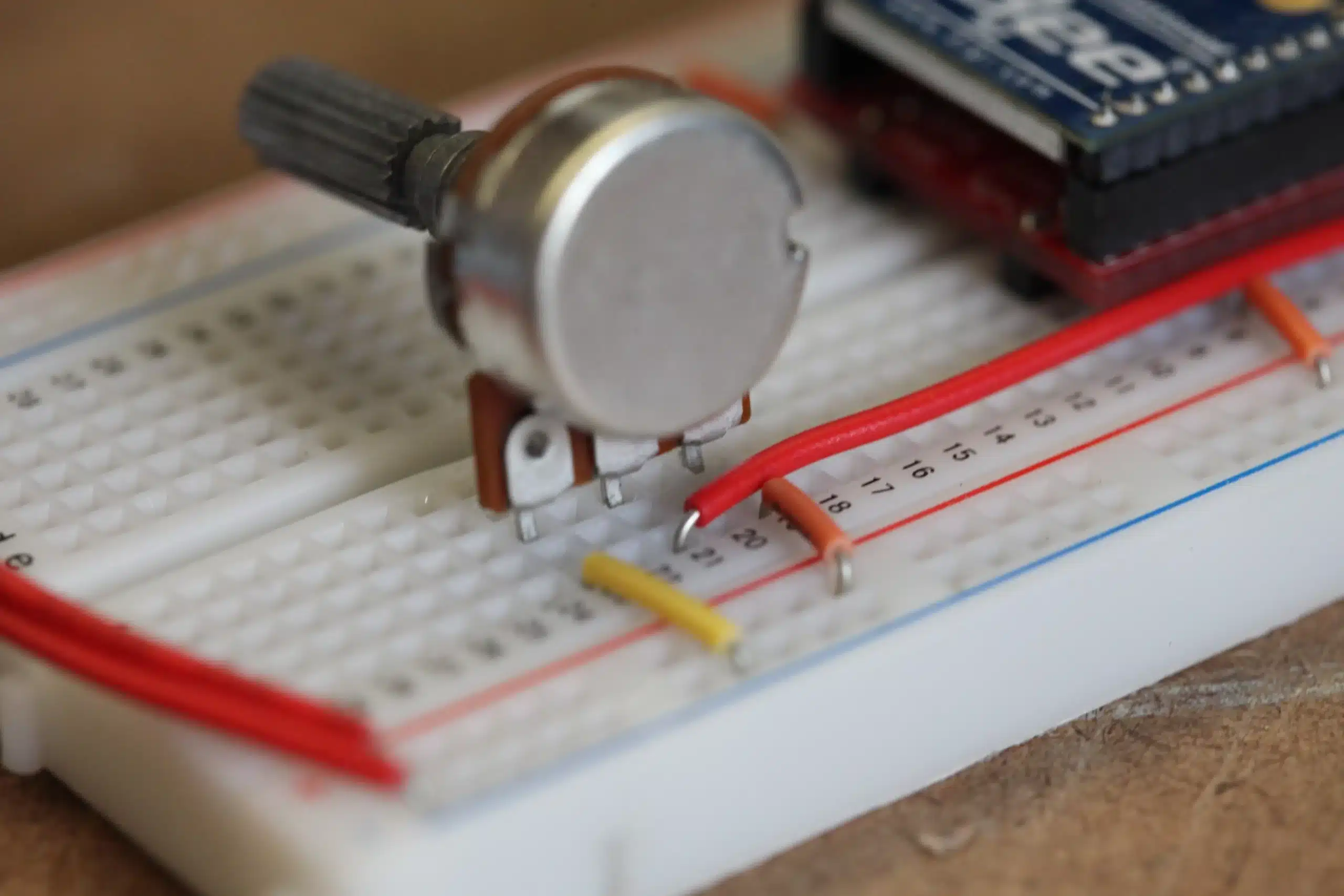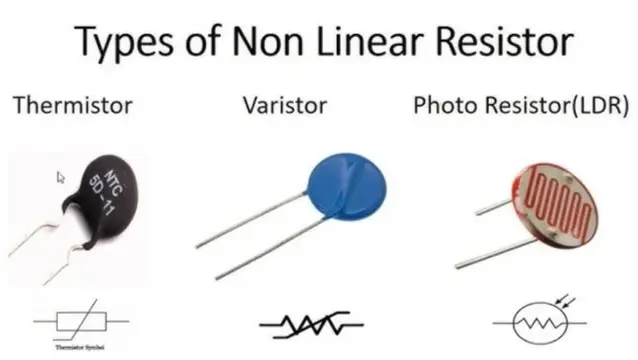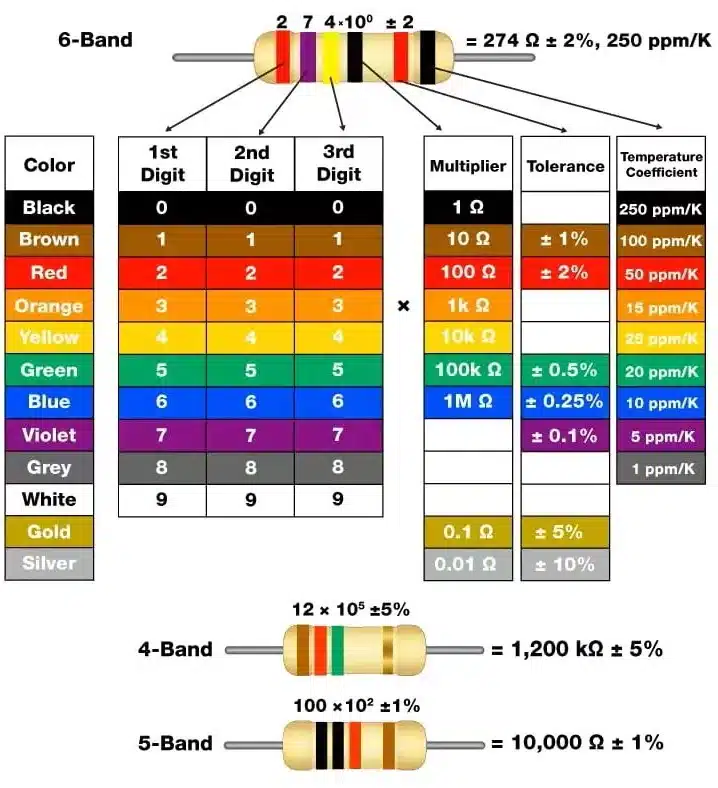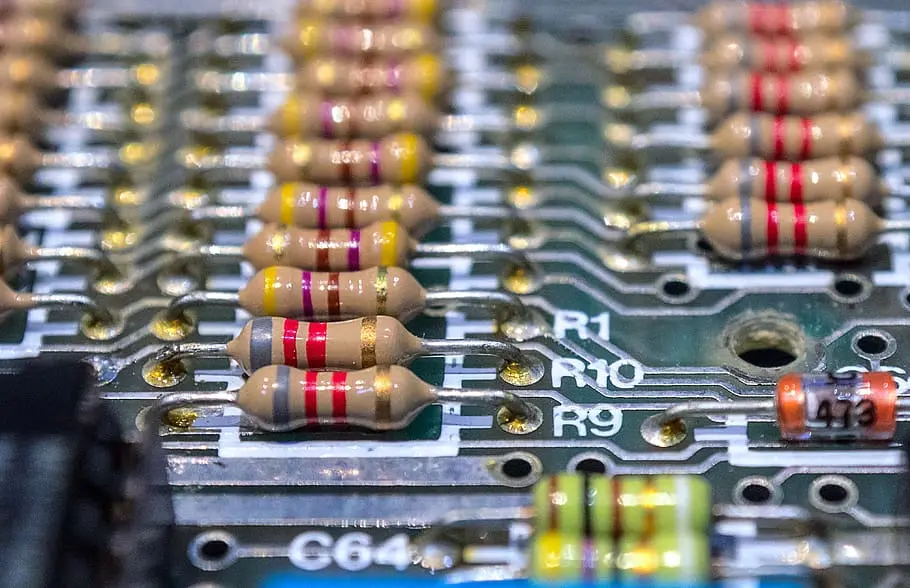If you’ve ever looked at a circuit board, you’ve probably noticed small cylindrical components with colored bands wrapped around them. These are resistors | one of the most fundamental parts of electronics. In this guide, we’ll explain what resistors are, explore their different types, understand how they’re used, and decode the mysterious color bands.
What is a Resistor?
A resistor is a component that limits or controls the flow of electric current in a circuit. By resisting the current, it protects sensitive components, divides voltage, and helps circuits function properly.
- Think of it like a narrow pipe in plumbing | it slows down water flow without stopping it completely.
- Resistors are measured in ohms (Ω), which quantify how much resistance they provide.
Why Are Resistors Important?
Resistors may look simple, but without them, electronics wouldn’t work correctly. They:
- Prevent components like LEDs from burning out by controlling current.
- Adjust voltage levels in circuits.
- Help set operating conditions for transistors and ICs.
- Convert excess electrical energy into heat safely.
Example: In a phone charger, resistors regulate current so that your device isn’t overloaded.
Types of Resistors
There isn’t just one type of resistor—engineers use different kinds depending on the application.
Fixed Resistors
- Provide a single resistance value that doesn’t change.
- Most common type, found in almost all electronics.
- Example: A 220Ω fixed resistor in an LED circuit.

Variable Resistors (Potentiometers)
- Resistance can be adjusted manually.
- Used in volume knobs, light dimmers, and tuning circuits.

Special Resistors
- Thermistors → Change resistance with temperature (used in temperature sensors).
- LDRs (Light Dependent Resistors) → Change resistance with light (used in streetlights).
- Fusible Resistors → Act as safety devices; burn out to protect a circuit if current is too high.

H2: How Resistors Are Used in Real Life
Resistors are everywhere—inside gadgets, appliances, and even cars. Some real-world uses include:
- LED protection: Preventing lights from blowing out.
- Voltage dividers: Splitting voltage into smaller usable levels.
- Current limiters: Controlling the amount of power reaching sensors.
- Timing circuits: Working with capacitors to set delays in devices like alarms.
Example: In a digital clock, resistors help manage timing so the numbers change at the correct pace.
Understanding Resistor Color Codes
One of the most confusing parts for beginners is the color bands on resistors. These bands aren’t decoration—they tell you the resistance value.
The Color Code System
Each color represents a number:
- Black = 0
- Brown = 1
- Red = 2
- Orange = 3
- Yellow = 4
- Green = 5
- Blue = 6
- Violet = 7
- Gray = 8
- White = 9
The first two bands give the digits, the third band is the multiplier, and the fourth band (if present) shows tolerance.

Example Calculation
- Bands: Red, Violet, Orange, Gold
- Digits: Red = 2, Violet = 7 → 27
- Multiplier: Orange = ×1,000 → 27,000 (27kΩ)
- Tolerance: Gold = ±5%
So the resistor value is 27kΩ ± 5%.
Tips for Beginners When Reading Resistors
- Always hold the resistor so the tolerance band (gold/silver) is on the right.
- Practice by reading common resistor values like 220Ω, 1kΩ, and 10kΩ.
- Use a multimeter to double-check values while you’re learning.
Conclusion
Resistors may be small, but they play a massive role in electronics. From protecting LEDs to setting circuit conditions, they’re essential to nearly every device you use. By understanding resistor types, uses, and color codes, you’ll be better equipped to read and design circuits confidently.
👉 Ready to practice? Grab a few resistors, a breadboard, and start experimenting!


